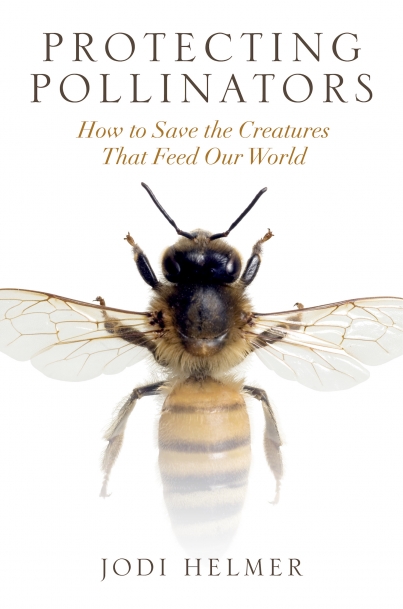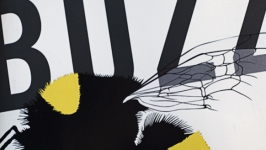Protecting Pollinators
Protecting Pollinators is a guide to the problems facing not only the most visible of pollinators—the honeybee—but all of the pollinators being adversely affected by climate change, pesticides, habitat loss and more. Helmer’s book is unique in its equal championing of all our pollinators: ants, birds, beetles, bats, flies, moths, wasps and butterflies.
While you may think you know about the problems pollinators are facing (Colony Collapse Disorder!), Helmer’s book shows that there is so much more to the problem and that many species are facing dire repercussions that can lead to negative effects on human lives.
Published in April of this year, this 171-page book is divided simply into seven 20- to 30-page chapters covering topics like toxins, how to be a citizen scientist and the need for native plants. In the introduction, we learn that Helmer—the author of six books and work in publications including Sierra, NPR and National Geographic Traveler— lives on a homestead in rural North Carolina, where she began beekeeping after receiving a hive as a gift. As Helmer got more intrigued by the complexities of beekeeping, she learned about the threats facing pollinators and vowed to do her best to protect them—starting with her own hives. But she also started to notice other pollinators: sweat bees, carpenter bees, hummingbirds, butterflies, hoverflies, hawk moths.
Helmer goes on to explain her approach. Before we can understand what is currently happening to our pollinators, we need to be reminded of what pollination is, who does the work and why it matters. She wants her readers to know that all pollinators—even the less-iconic ones—matter and are in danger from habitat loss, invasive species, pesticides and climate change.
Throughout each chapter are numerous sidebars on topics not necessarily related to the chapter itself but that explain related topics. these tend to get a little intrusive but do offer additional insight. The book ends with 29 ways you can help pollinators, lest readers finish the book feeling that our pollinators are doomed. Overall, a heavily researched and perhaps too lengthy testament to our pollinators, this book is for those deeply committed to learning about how and why we need to save them all.






